Still Waters Farm: Wetland Wasteland to Beaver and Waterfowl Haven
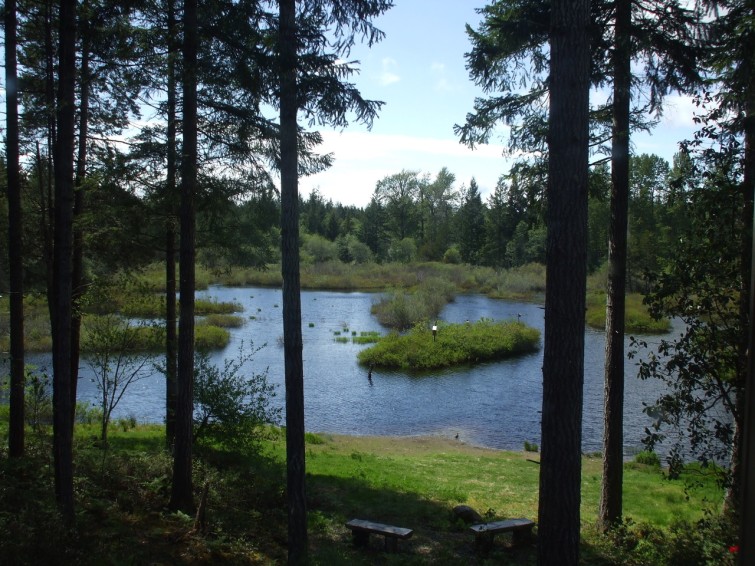
Sometimes it takes a lot of imagination to see the potential in a piece of land.
By the time Beth and Mark Biser bought Still Waters Farm in 1990, the 48-acres in Mason County, Washington was a shell of its former self. Its 20 acres of wetlands had suffered two major disturbances.
According to Mark, “Way back in the 1920s or 30s, this property was part of a dairy farm. And the story, though it’s uncorroborated, is that the dairy farmer’s kids hand-ditched down through the forest to drain the wetland system so that they could pasture their dairy cattle out on the wetland.” Years later in the early 1960s, someone decided to remove the peat layer from about half of the wetland footprint so they could mine for clay. The clay mine left a five acre hole gouging the middle of the land.
Undoubtedly, these past uses were bad news for pretty much every plant and animal that considered that wetland its home. The damage was a disservice to the local ecology of the area given the important ecosystem services that wetlands provide.
Wetlands are the Brita filters of our ecosystems. They strain sediment, nutrients, and harmful pollutants from water as it moves through a watershed. They are also home to an abundance of wildlife; over 80 percent of western Oregon and Washington wildlife species use riparian zones or wetlands during some part of their life cycle. As if that’s not enough to convince us wetlands are wonderful, they’re also serious carbon sinks. World-wide, wetlands represent around three percent of total land area, but sequester nearly a third of all soil carbon.
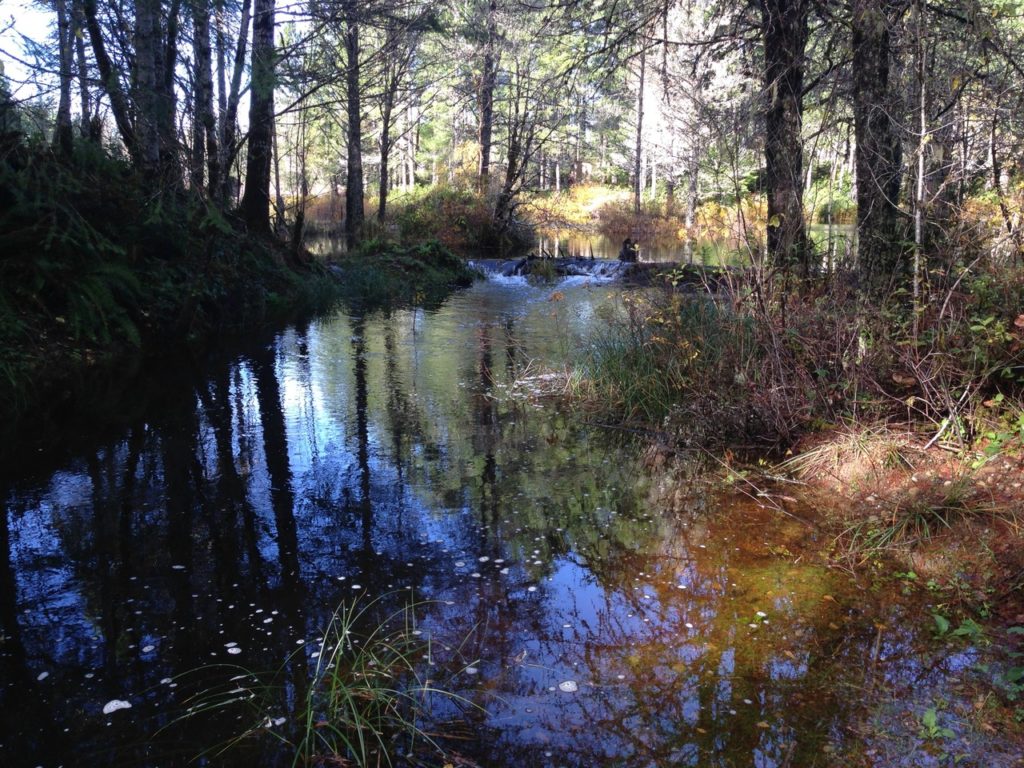
The Bisers knew the land they’d purchased wasn’t the paragon of healthy wetland or forest. For one thing, it was quiet. Only the ghosts of wetland wildlife remained. But they saw its potential. “Having a pair of geese land here was a huge deal,” recalls Mark. The former mine was filled with water but contained little aquatic vegetation, and what vegetation existed on the drained land was monotypic, dominated by Douglas spirea and willow.
Armed with a vision of a healthy wetland and forest ecosystem – and informed by the best available science – the Bisers applied for and won a small grant from the US Fish & Wildlife Service to start restoring the land in 1994. The project was unpretentiously titled Small Ponds for Wildlife. They used an excavator to dig a series of small ponds connected by channels of water, and built peat islands here and there. After mowing down the spirea, a more diverse community of sedges, rushes, and grasses moved in naturally. Ash and cedar were planted for additional diversity, and would make good beaver food in the future.
The Bisers continued to chip away at a long list of projects aimed to diversify the forest, restore the wetlands, and bring back wildlife; along the way they also joined NNRG’s Forest Stewardship Council group certificate. They applied for and won Natural Resources Conservation Service EQIP and CSP funds to help with restoration work – extending the resources they were able to put into the habitat enhancement.
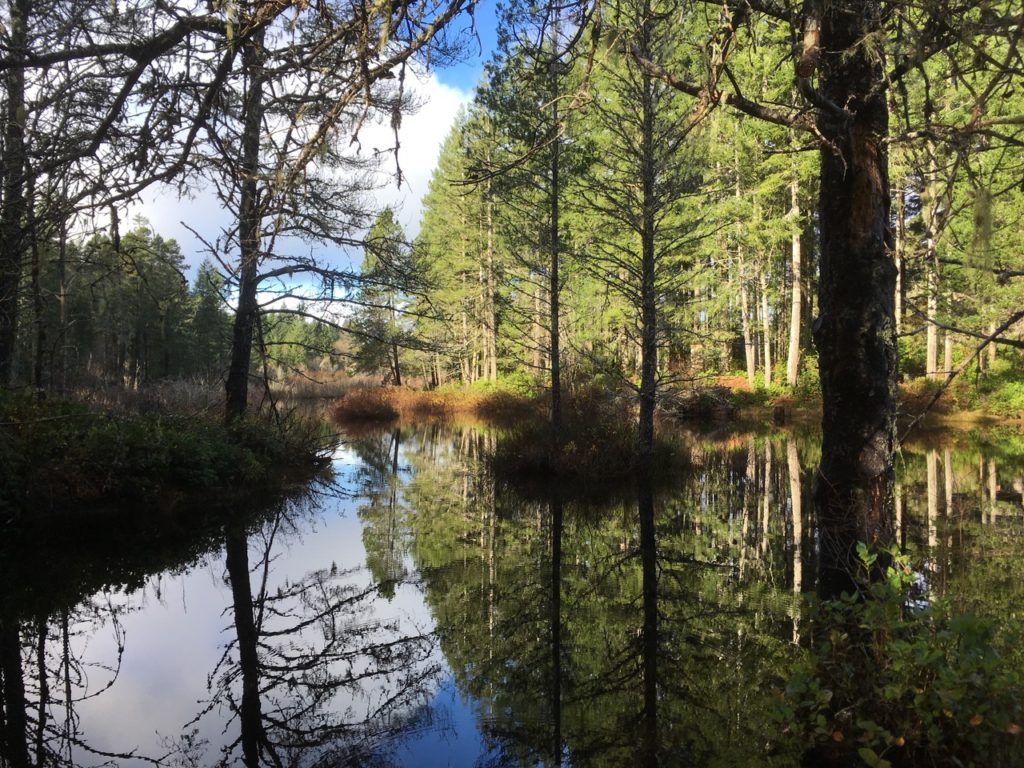 “We started with restoring the wetland hydrology and enhancing the wetland habitat. We built and installed LOTS of nest boxes – small and large. We planted thousands of trees and shrubs to diversify the forest. We created some structure with snags and brush piles. We dug ‘vernal pools’ for amphibians and insects. We created some habitat diversity by clearing some areas and creating open spaces/meadows. And we purchased some adjacent property to better buffer the wetland.”
“We started with restoring the wetland hydrology and enhancing the wetland habitat. We built and installed LOTS of nest boxes – small and large. We planted thousands of trees and shrubs to diversify the forest. We created some structure with snags and brush piles. We dug ‘vernal pools’ for amphibians and insects. We created some habitat diversity by clearing some areas and creating open spaces/meadows. And we purchased some adjacent property to better buffer the wetland.”
The Biser’s advice for other landowners approaching a big restoration project: “It’s important to have some understanding of ecology and habitat, and the animals and their requirements. Read, or study, or learn about forest ecology and habitat. You can do that on your own or find somebody who’s an expert. We were lucky along the way to have a bunch of experts to provide technical advice to our projects.”
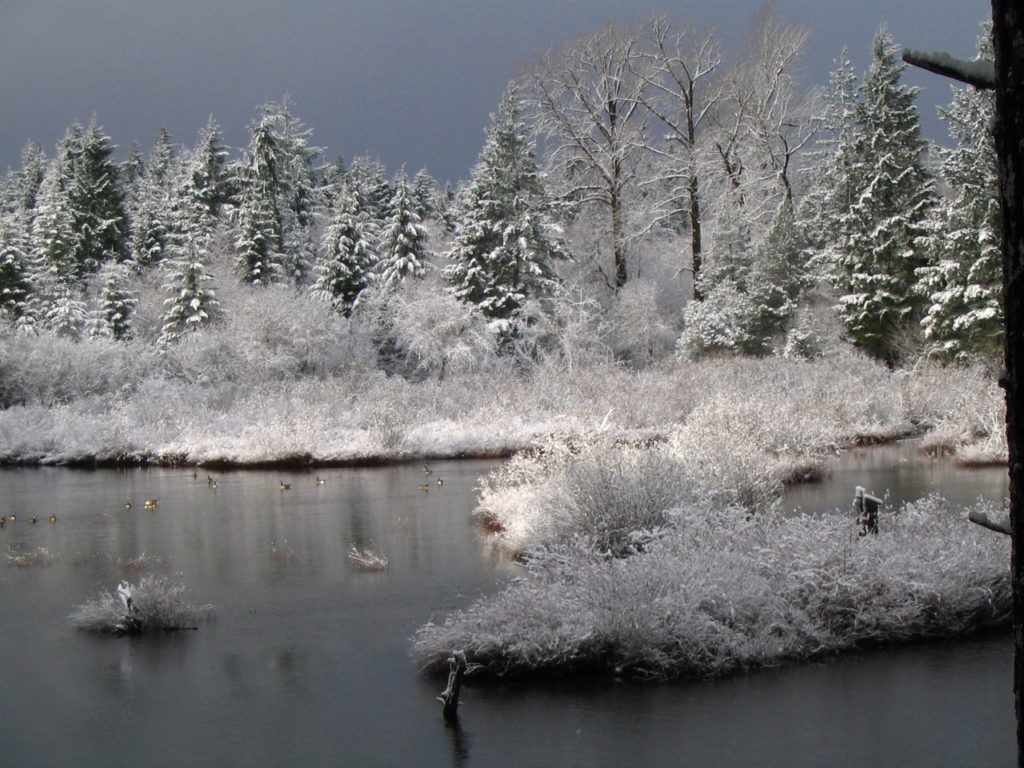
The hard work paid off. Almost immediately Beth and Mark began seeing more waterfowl on the property. Wood ducks filled the nesting boxes. The new waterways and increasing vegetation gave the ducks a place to land and, when they needed to, hide.
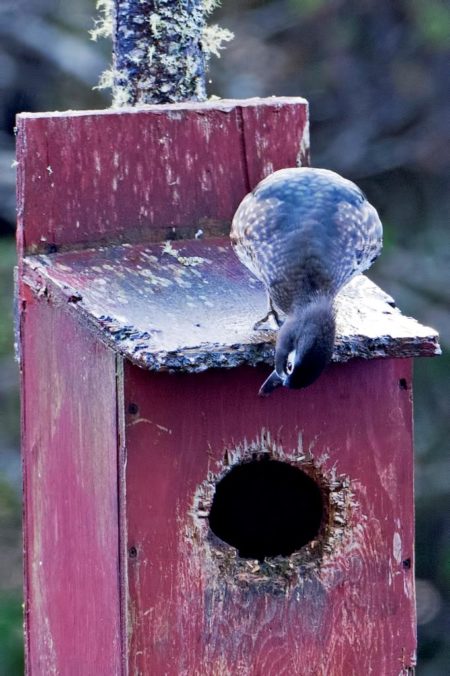
Now, Still Waters Farm is a haven for wood ducks and other waterfowl. Birds can choose from over 50 nesting boxes of various sizes.
Funny enough, says Mark, after all these years it’s still difficult to know what makes one nesting box successful while another fails. “The worst-looking box we have – built in 1994 from chipboard, and painted red because that’s the color of paint we had handy – gets used every year.”
Every few years, new nesting boxes are added and others receive facelifts. Mark uses a combination of cedar and other woodscraps, and his design changes over time. The bigger boxes are for wood ducks, the smaller ones for migratory songbirds like bluebirds and swallows.
Says Mark, “We monitor the success of our nest box program, mostly anecdotally. Last year was a really good year – more than half of the boxes were used. We can tell [when they’re used] because of the eggshells and down, and we see the clutches of ducklings.”
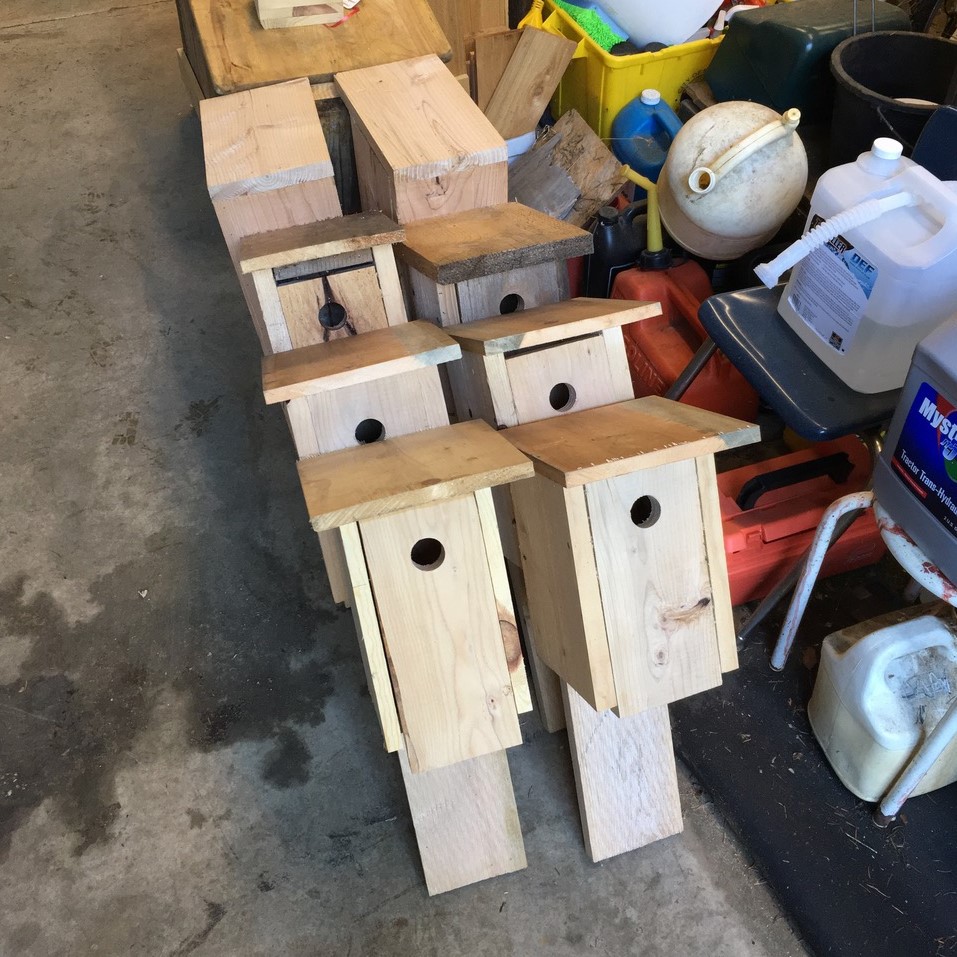
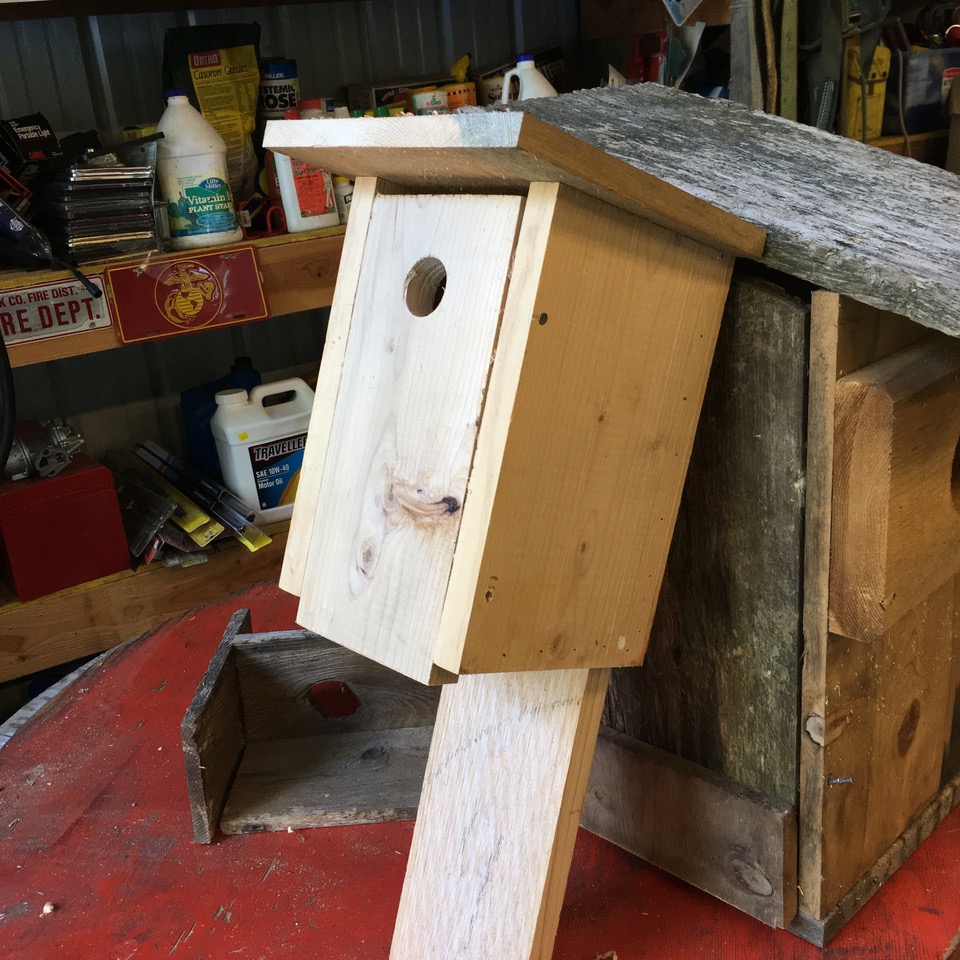
Birds aren’t the only inhabitants of Still Waters Farm. Cougar, black bears, beavers, otters, weasel, mink, and the occasional bobcat include the forest as part of their wider roaming lives.
Twenty years ago it took a stretch of the imagination to picture Still Waters Farm functioning as a healthy, rich ecosystem. Luckily, the Bisers were creative enough to take on the task and stuck to it. Their work demonstrates that the difference between a silent, degraded wetland and one teeming with native wildlife and plants might only be a landowner with a vision, a grant, and a little bit of patience.
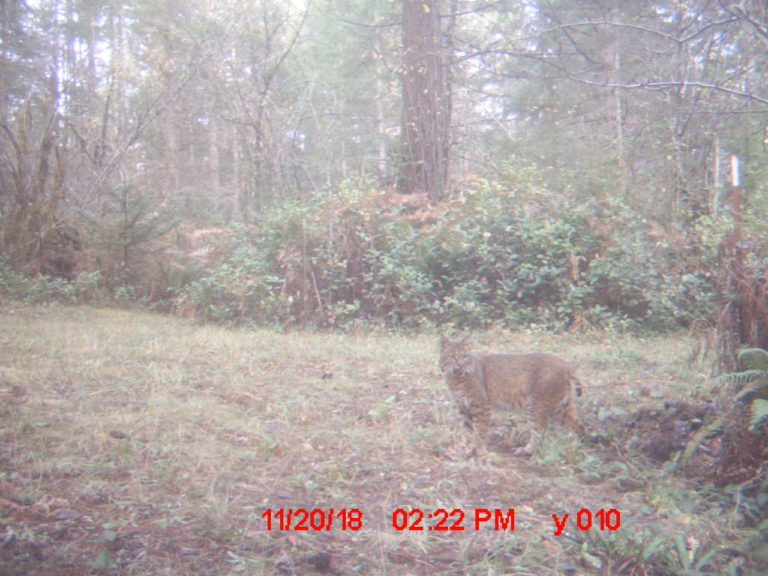
Wood duck photo taken by and property of Tom Michalski. All others taken by and property of Mark & Beth Biser.
Helpful resources to enhance your forest for wildlife are available here.

One Comment
Fantastic!